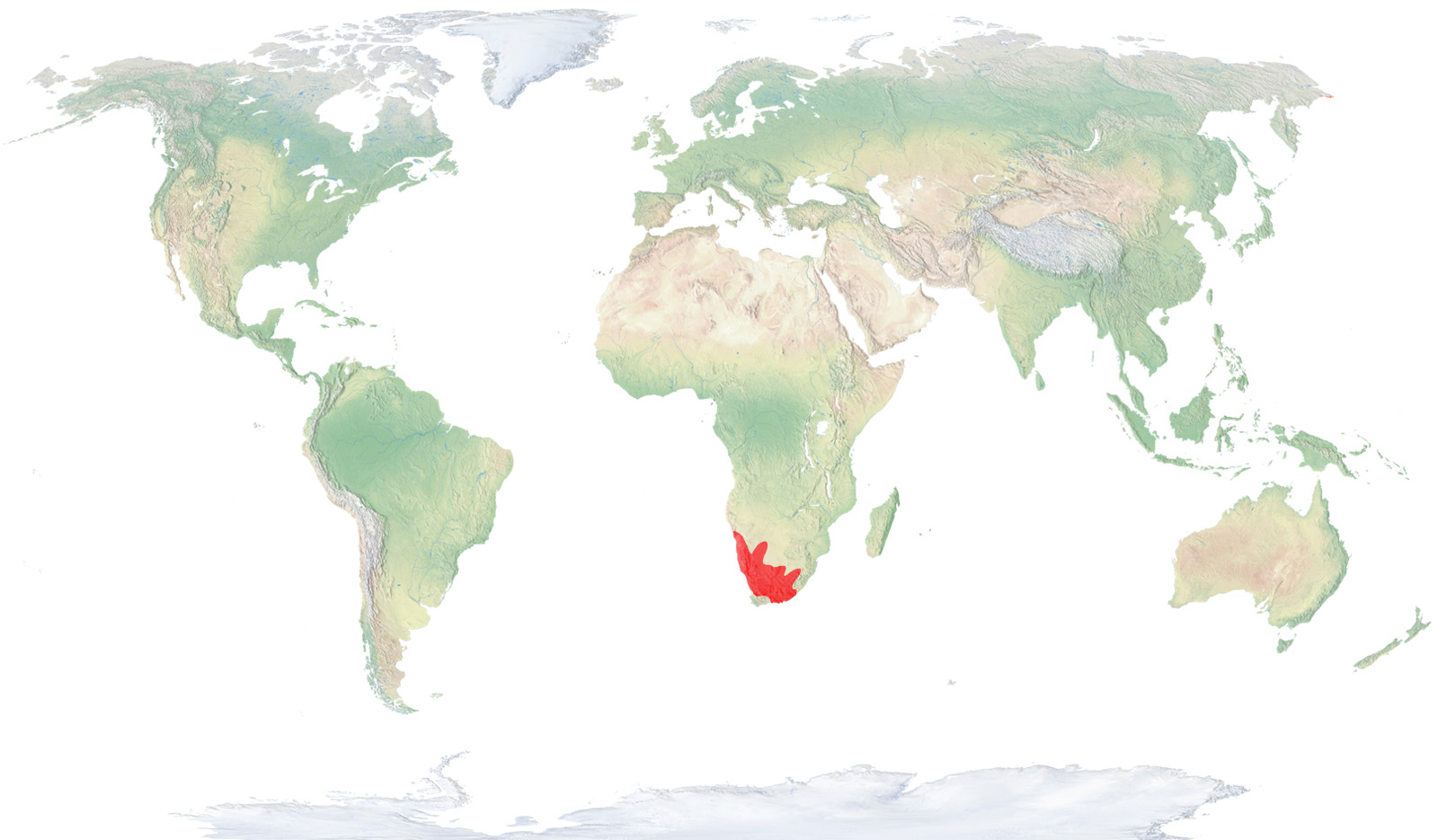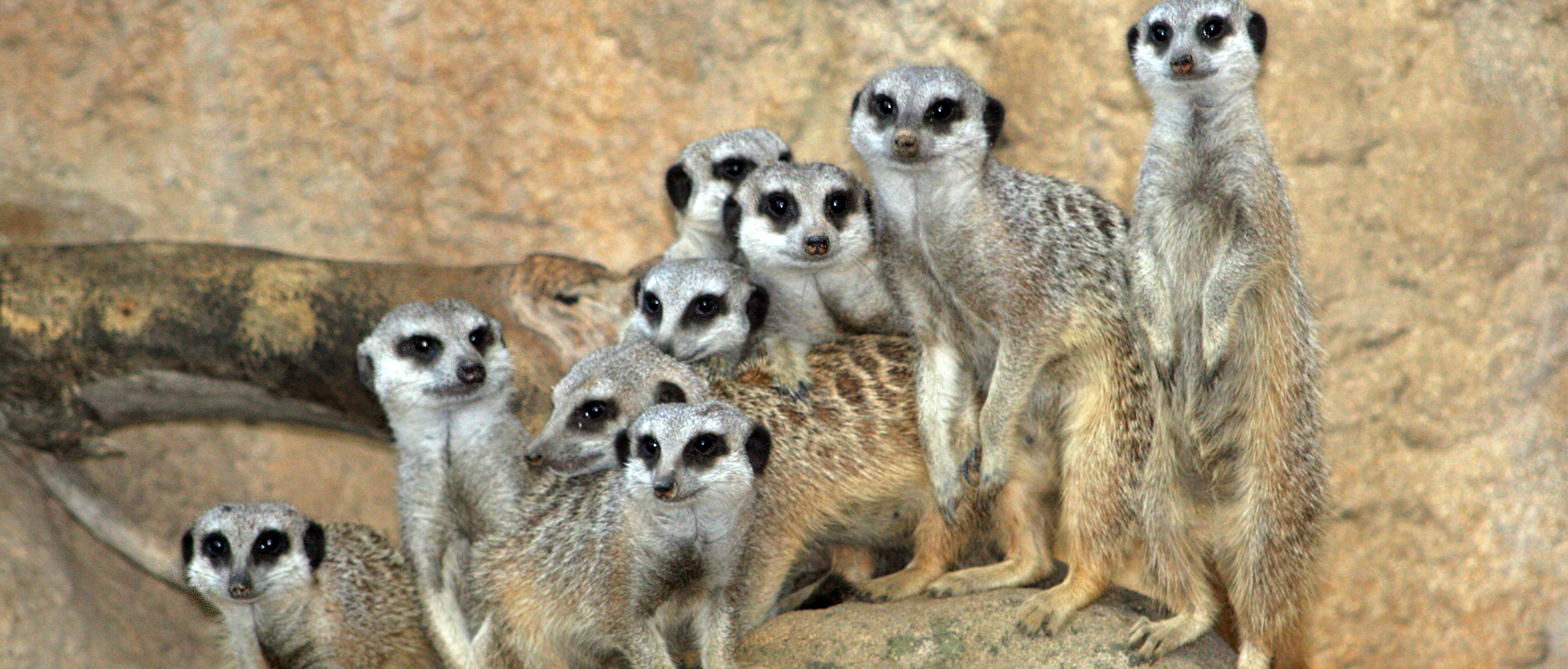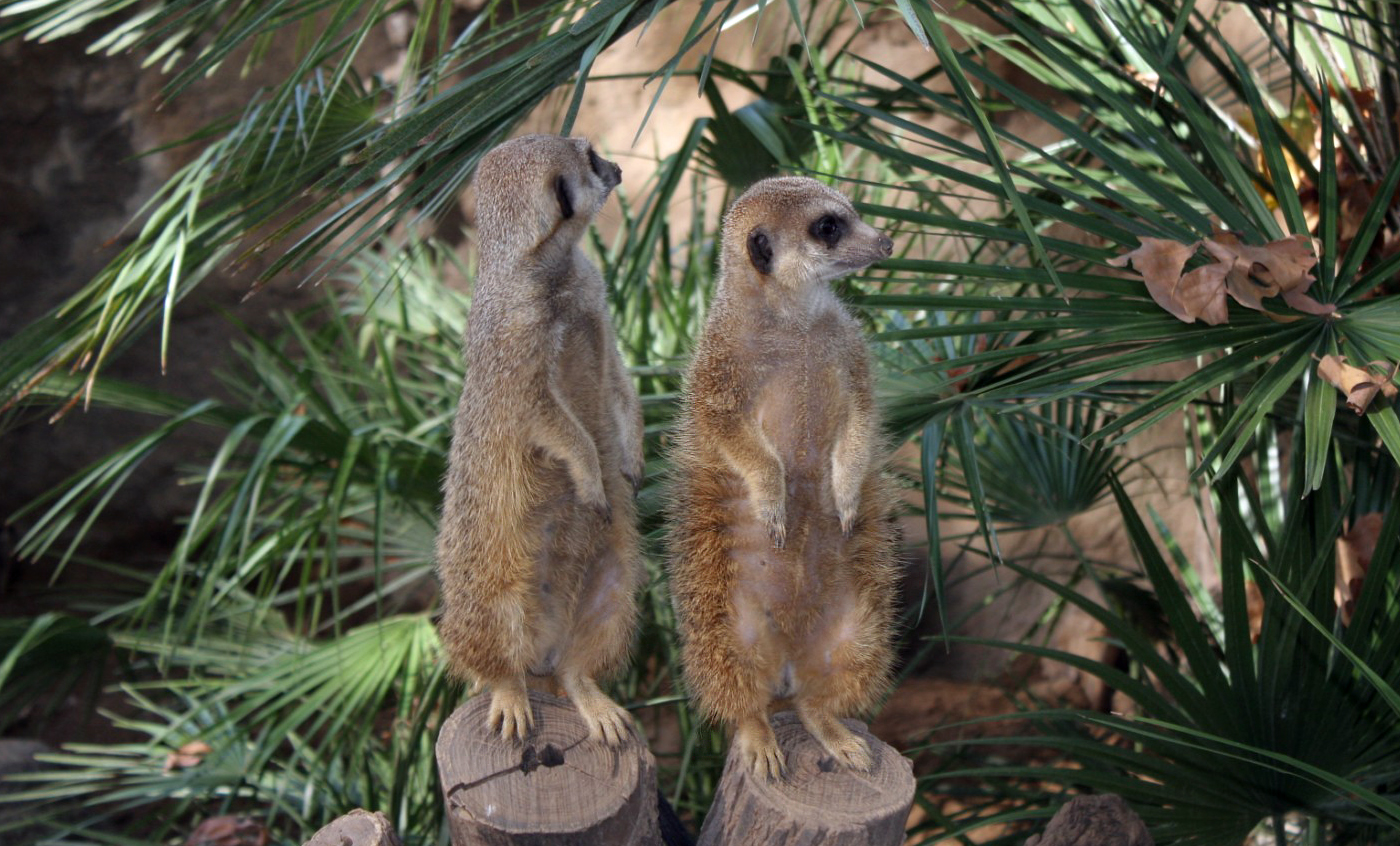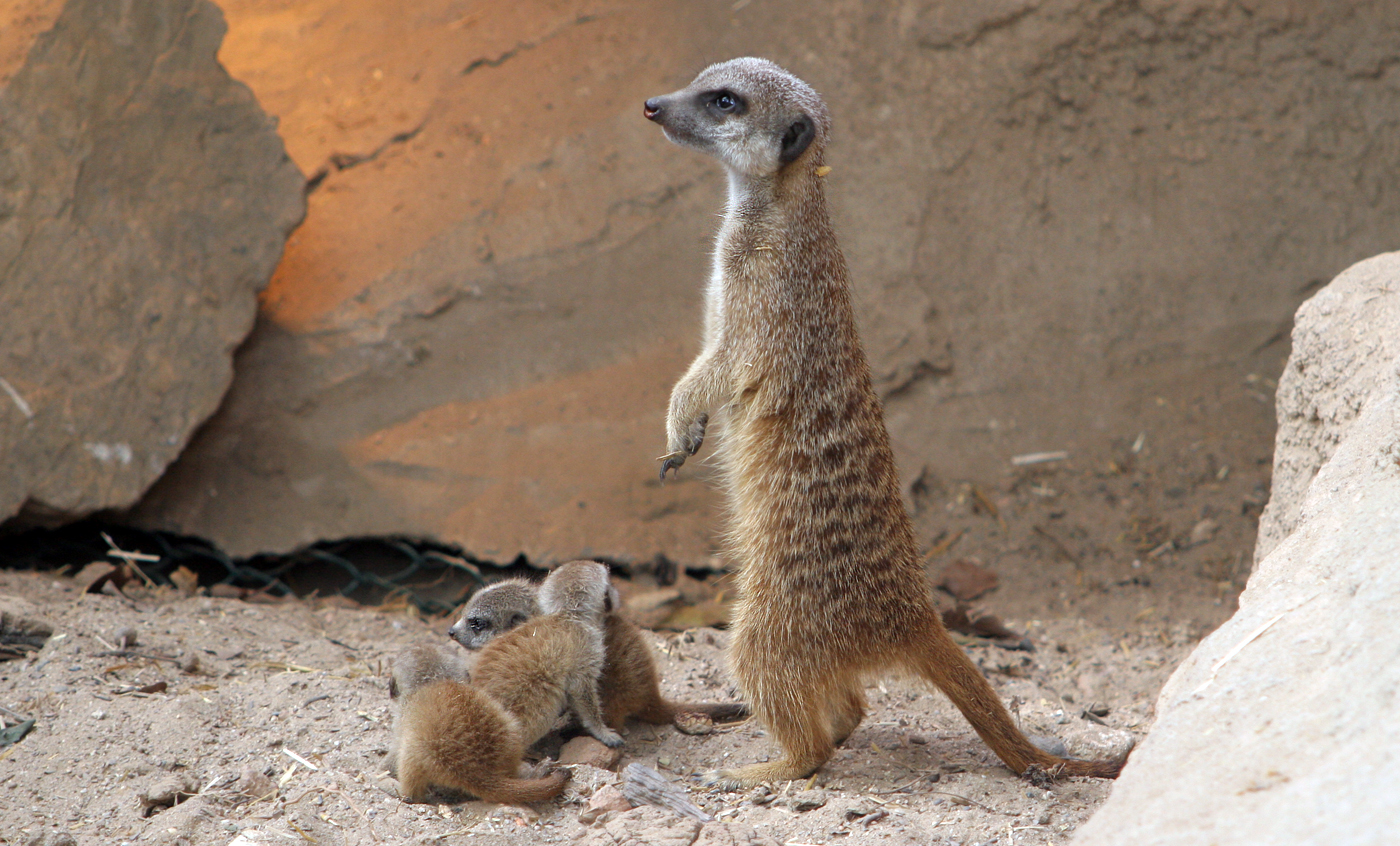Meerkat
The meerkat is a small mongoose that lives in the dry savannahs and the subdesert plains of the southernmost part of Africa. It is an active hunter that mainly feeds on insects and other invertebrates, although it can also eat birds, eggs, small mammals and even reptiles as dangerous as cobras.
Diurnal and social, it forms colonies that live in subterranean burrows. It is very characteristic to spot them standing on their hind legs, watching the surroundings from the burrow’s entrance.
Natural habit
Southern Angola, Namibia, South Africa and southern Botswana.

- Distribution / Resident
- Breeding
- Wintering
- Subspecies
Risk level
- Extint
- Extint in the wild
- Critically endangered
- In Danger
- Vulnerable
- Near threatened
- Minor concern
- Insufficient data
- Not evaluated
Taxonomy
Physical characteristics
Biology
Reproduction
Biology
It has light brown fur with darker stripes on the back, a long snout, small and round ears and strong and curved claws, that it uses to dig. Its tail is thin and slender and, unlike other mongoose species, it is not very furry and is black tipped.
Dry savannahs and subdesert plains with sparse vegetation. They do not live in completely desert regions, dense forests or mountain areas.
It is an active hunter that mainly feeds on insects, larvae, worms, snails and other invertebrates, but it can also eat birds, eggs, small mammals, snakes and even fruit and roots.
Females generally mate when they are two years old and can give birth at any time of the year, although it usually takes place during the hot and rainy season, from August to March. The gestation period lasts for eleven weeks approximately and they can give birth up to three times in one year, with an average of three offspring each time. Males can play an active role in looking after pups and, due to its social nature, non-mating individuals also help, watch or feed the young ones.
It is diurnal and social: it forms large colonies that live in subterranean burrows, which have often been previously build by other animals. Eventually, these burrows reach great complexity, with intercommunicated galleries and several entrances.
It is very characteristic to spot them standing on their hind legs, watching the surroundings from the burrow’s entrance. Whenever a predator appears, the meerkat on sentry duty gives a characteristic warning bark and all the members of the colony run inside the burrow.
They have a docile behaviour, which is why they are held as pet animals in many zones of its distribution area.
It is a common species, abundant in a great part of its distribution area.





